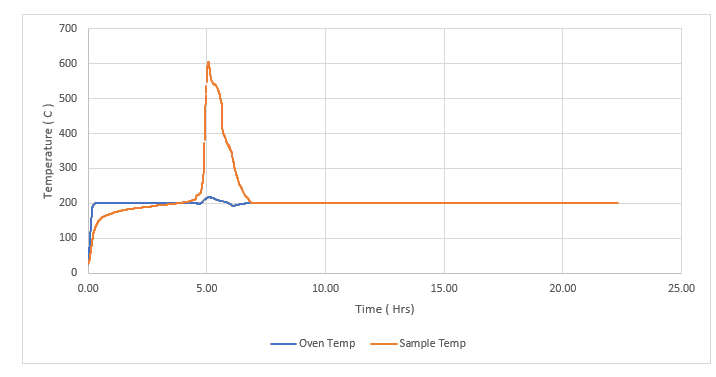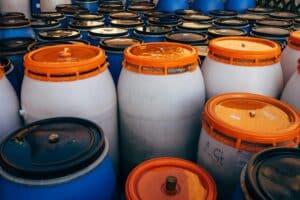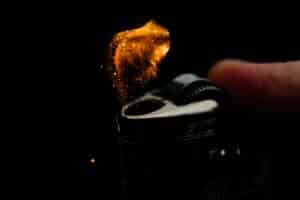We also offer
Self-Heating Solids – Basket Self-Heating Test
The Basket Self-Heating Test evaluates a material’s ability to undergo oxidative self-heating, helping identify self-heating solids. By exposing the material to air at elevated temperatures inside a wire mesh basket, the test assesses how solids—especially those prone to spontaneous combustion—generate heat when exposed to oxygen or air.
In this test, a sample—typically pellets, particles, or granules—is placed in a wire mesh basket. The basket is positioned in an oven or enclosed chamber at a specified temperature. The temperature of the sample is monitored continuously or at intervals to detect signs of self-heating or exothermic decomposition.
Testing Principle and Methodology
The basket is filled to the top with the test material and covered, then placed in the oven center at the required test temperature. The test runs up to 24 hours or until exothermic decomposition occurs. Two thermocouples record temperatures: one inside the sample center and one between the container and the oven wall.
A positive result occurs if the sample ignites spontaneously or if its temperature rises 60°C or more above the oven temperature. Typically, about 1 kilogram of material is required, though this may vary depending on density. The UN Transport of Dangerous Goods Manual of Tests and Criteria recommends testing samples in their commercial or as-received form.
For guidance on performing the test correctly, please contact Prime Process Safety Center.

Basket Self-Heating Instrument manufactured by Carbolite Gero, UK

Typical Self-Heating Graph
Applicable Standard
The Basket Self-Heating Test follows the UN/DoT Standard for Transport of Dangerous Goods, Manual of Tests and Criteria, and EN15188: Determination of the Spontaneous Ignition Behaviour of Dust Accumulations, ensuring accurate classification of self-heating solids.
Data Interpretation
A substance is classified as a self-heating solid under UN Class 4, Division 4.2 if it shows a positive test result in a 100 mm basket at 140°C. A positive result means the sample temperature rises at least 60°C above the oven temperature during the 24-hour period. Packing groups are assigned based on test outcomes:
-
Packaging Group II: Assigned if a positive test occurs in a 25 mm basket at 140°C.
-
Packaging Group III: Assigned if any of the following conditions apply:
-
Positive results in a 100 mm basket at both 140°C and 100°C.
-
Positive at 140°C but negative at 120°C, with packages over 3 m³.
-
Positive at 140°C but negative at 100°C, with packages over 450 L.
-
-
Not Division 4.2: Assigned if any of the following conditions apply:
-
Negative result in a 100 mm basket at 140°C.
-
Positive at 140°C but negative at 120°C, with packages under 3 m³.
-
Positive at 140°C but negative at 100°C, with packages under 450 L.
-
When to Perform Basket Self-Heating Test
Perform this test for self-heating solids intended for bulk transport, especially materials exposed to elevated air temperatures. The test identifies the self-heating onset temperature and evaluates the material’s susceptibility to spontaneous heating or combustion under higher temperatures, oxygen exposure, or limited ventilation.
Why Choose Prime Process Safety Center
Prime Process Safety Center leads in process safety testing with highly experienced laboratory personnel. We focus on providing accurate, reliable, and defensible data that meets industry and regulatory standards. We understand the critical need for high-quality data and work diligently to deliver just that.
-
Experienced in performing Basket Self-Heating Tests with reliable results.
-
Equipped with state-of-the-art basket self-heating testing equipment for precise measurements.
-
Follow strict testing protocols and quality control to ensure consistent, dependable results.
- As an ISO/IEC 17025:2017 accredited laboratory, we follow rigorous quality and competency requirements for every test we perform.
-
Offer expert interpretation and analysis of test data, providing valuable insights and tailored recommendations for your specific application or research.
FAQ
Is the Basket Self-Heating Test a standard test method?
Answer: While variations in testing procedures may exist, the Basket Self-Heating Test is a recognized method used in various industries to evaluate self-heating tendencies of materials.
How is the data from the Basket Self-Heating Test utilized in industries?
Answer: Industries use test results to assess fire risks associated with materials, develop preventive measures, and establish safe storage, handling, and transportation practices.
What does a positive result in the Basket Self-Heating Test indicate?
Answer: A positive result suggests that the material has a tendency to generate heat and could pose a risk of spontaneous combustion under certain conditions.
What safety measures are considered during the Basket Self-Heating Test?
Answer: Safety protocols are observed to prevent potential fire hazards during the test. Adequate ventilation and proper handling of materials susceptible to spontaneous heating are crucial.
How long does the Basket Self-Heating Test typically last?
Answer: The duration of the test can vary based on the material being tested and the specified testing conditions. It may range from several hours to multiple days.
What parameters are monitored during the Basket Self-Heating Test?
Answer: The test monitors the sample's temperature changes over time to observe any self-heating tendencies, particularly when exposed to increased temperatures.
What types of materials are commonly subjected to the Basket Self-Heating Test?
Answer: Materials prone to self-heating and spontaneous combustion, such as certain chemicals, organic substances, and combustible solids, are often tested using this method.
Why is the Basket Self-Heating Test conducted?
Answer: The test is conducted to evaluate materials' susceptibility to self-heating and spontaneous combustion under specified conditions. It helps in assessing potential fire hazards associated with certain materials.
How does the Basket Self-Heating Test work?
Answer: The test involves placing a sample of the material, typically in pellet or granular form, inside a wire mesh basket or container. This basket is then exposed to controlled elevated temperatures, and the sample's temperature changes are monitored over time.
What is the Basket Self-Heating Test?
Answer: The Basket Self-Heating Test is a laboratory procedure used to assess materials' propensity for self-heating and spontaneous combustion by subjecting samples to elevated temperatures in a controlled environment.
















